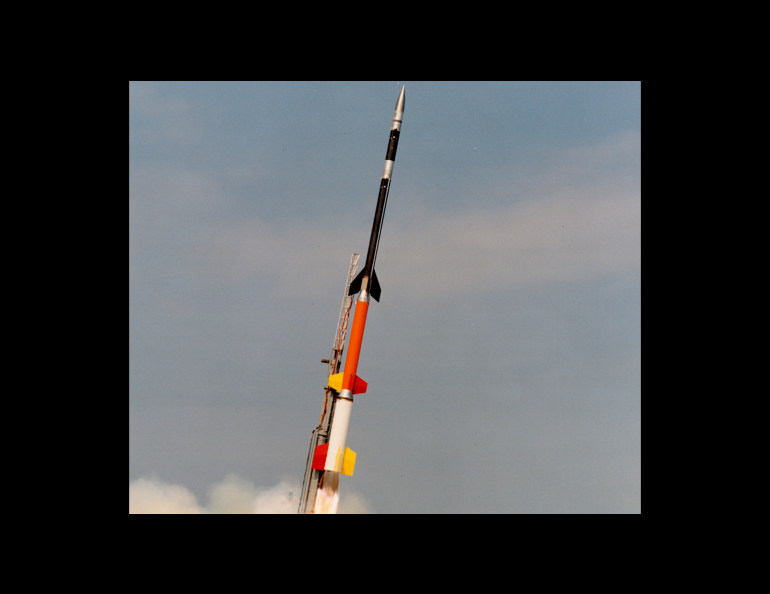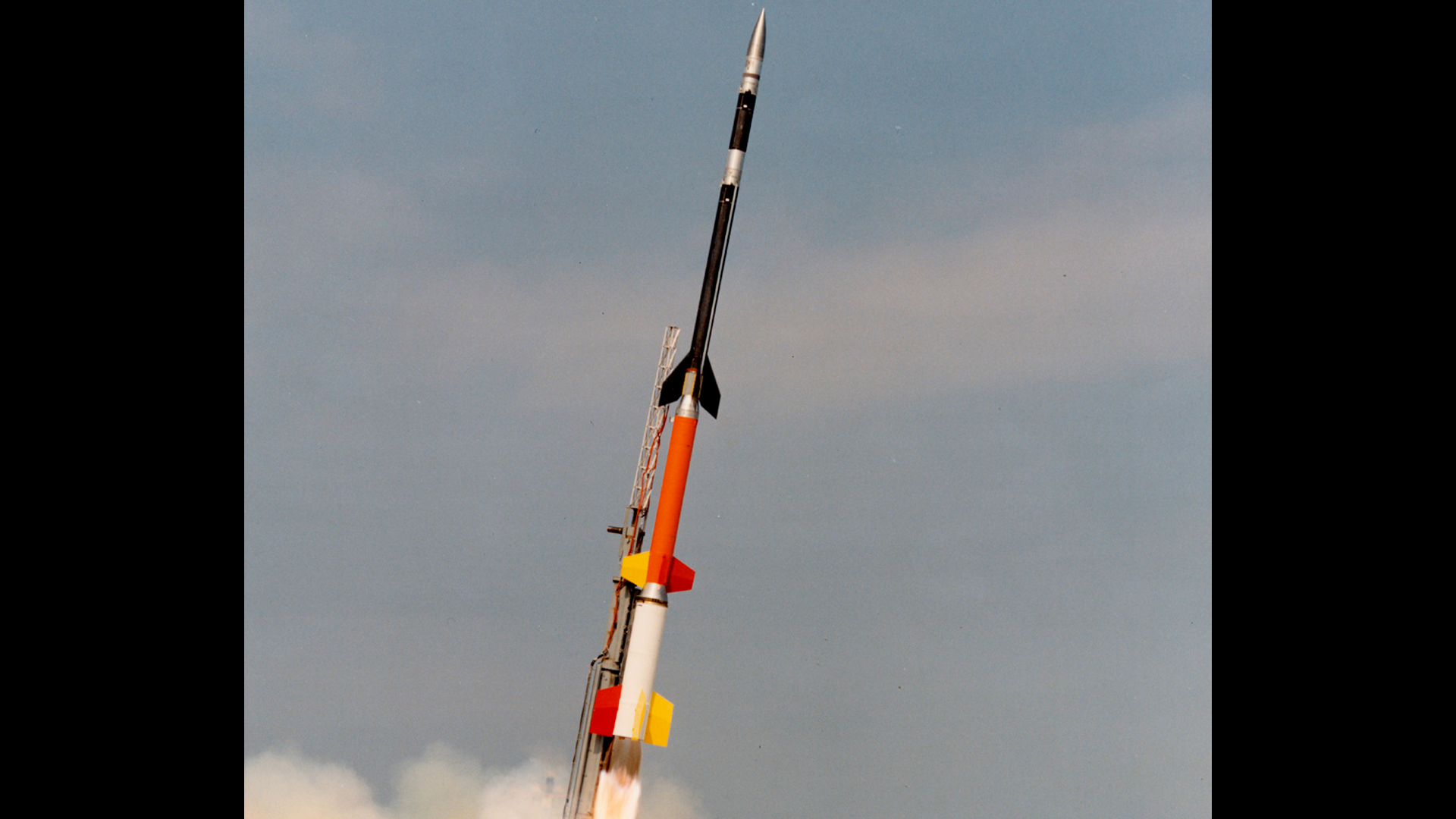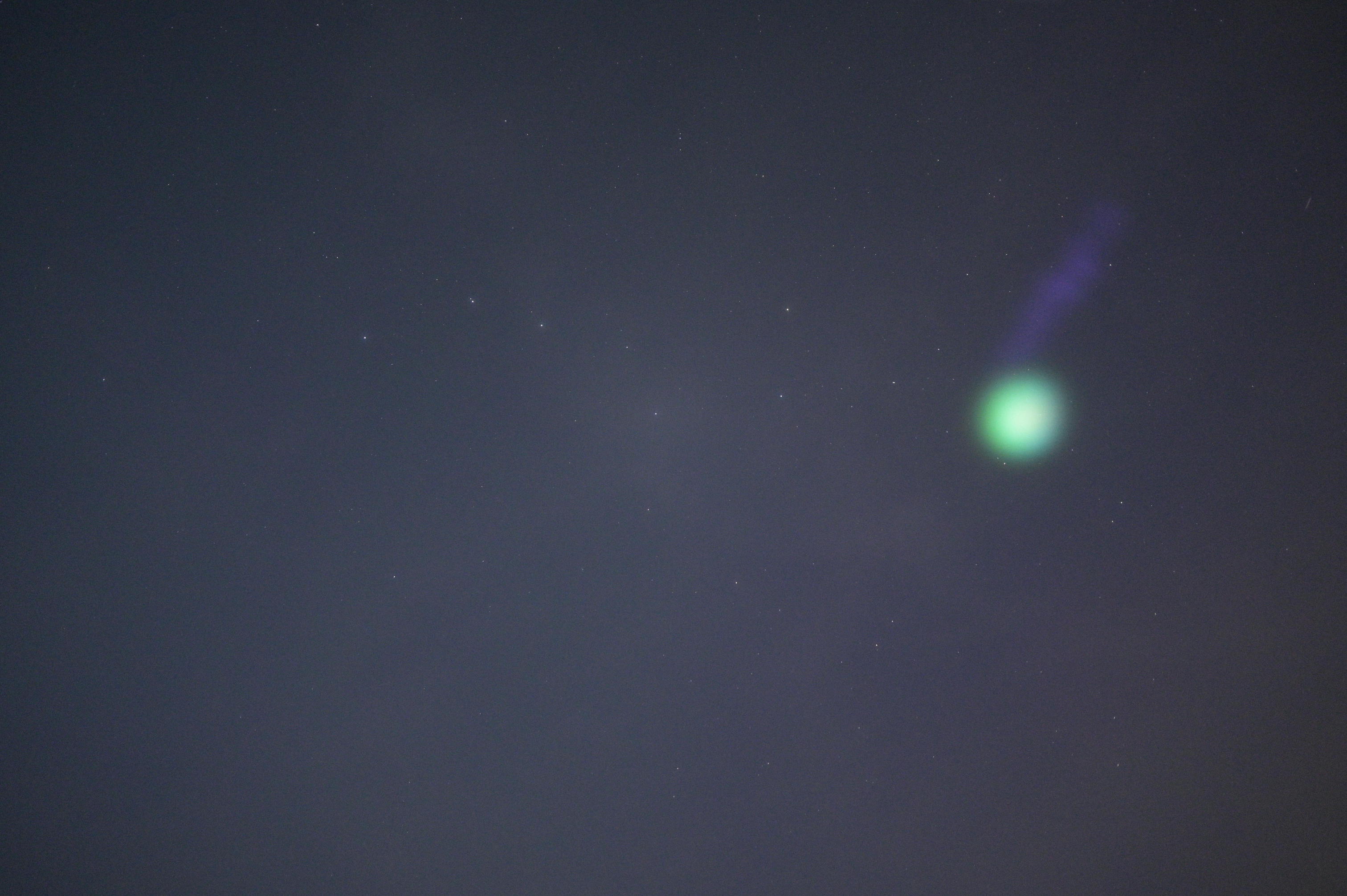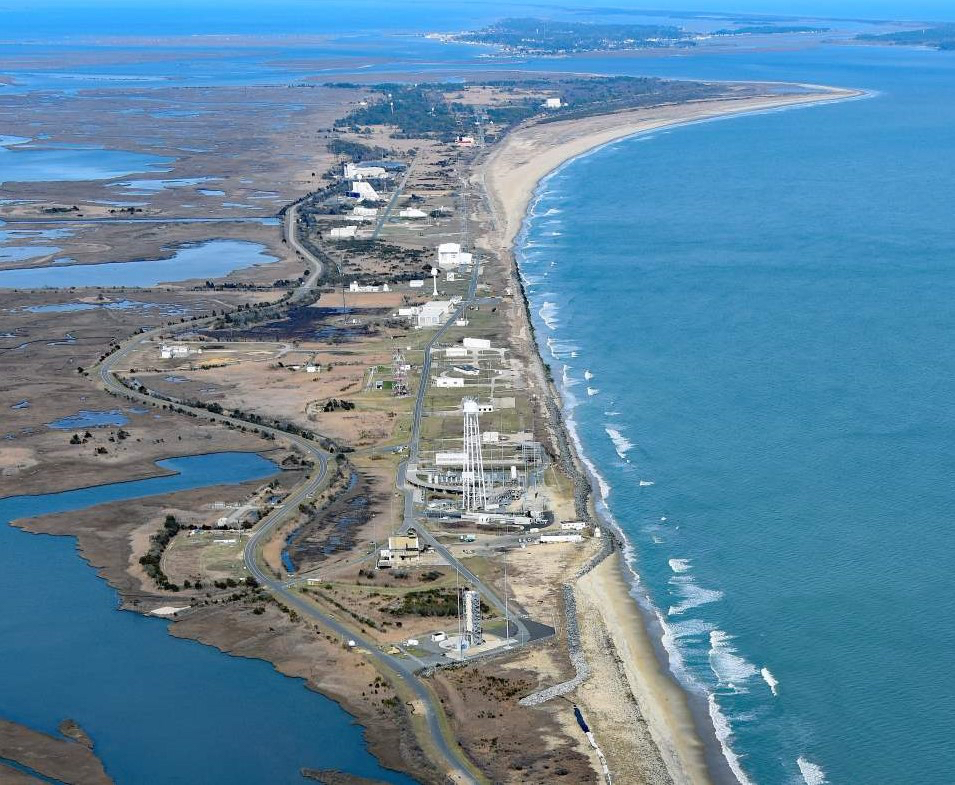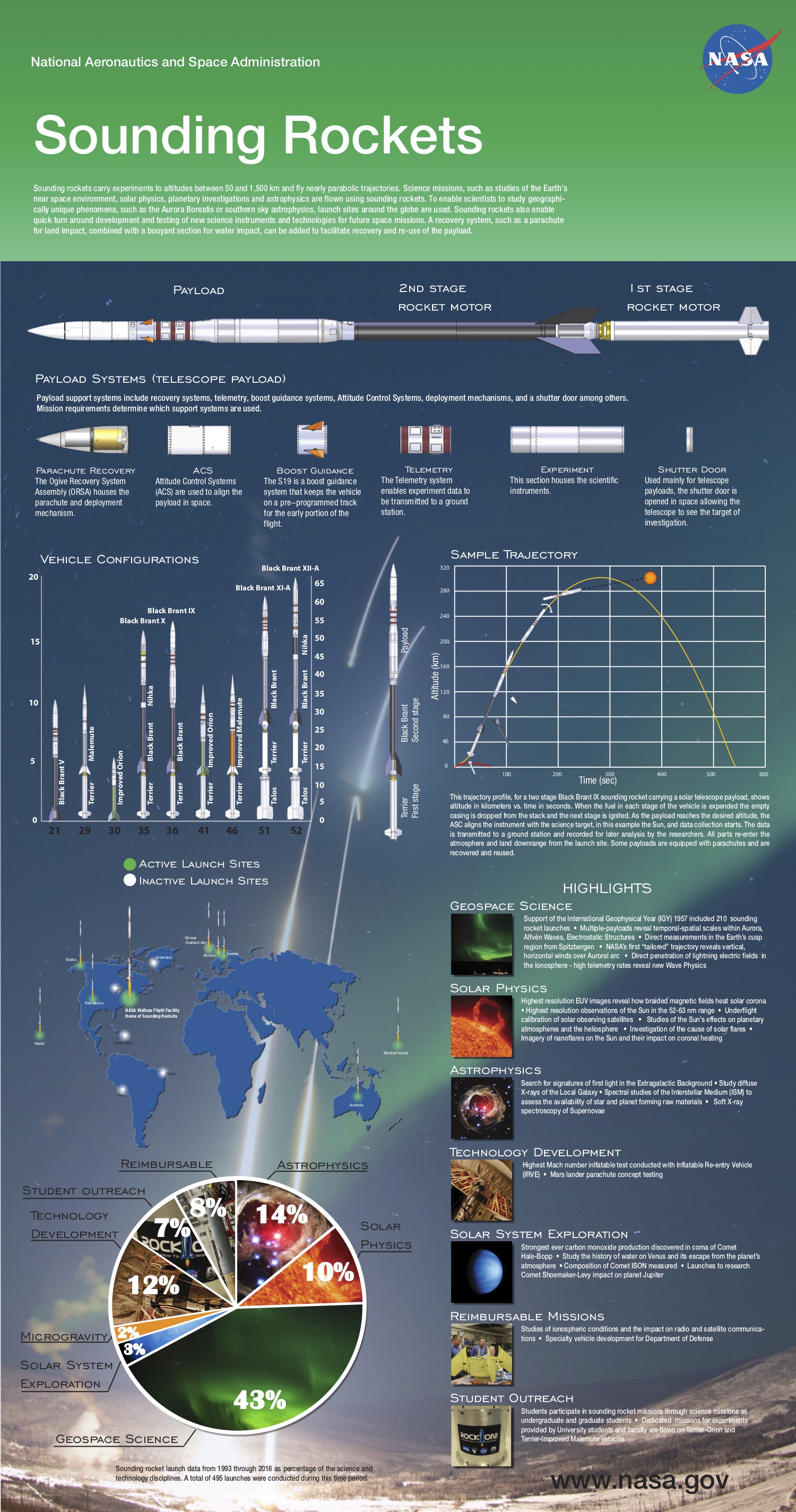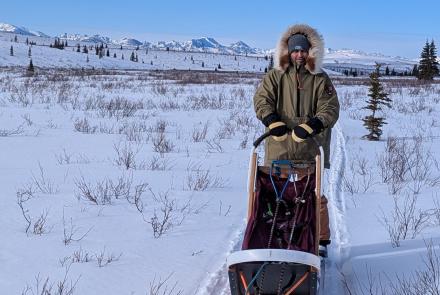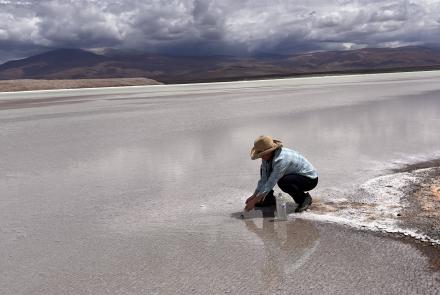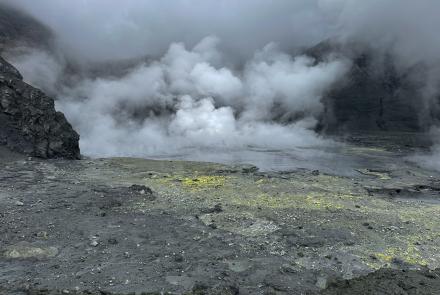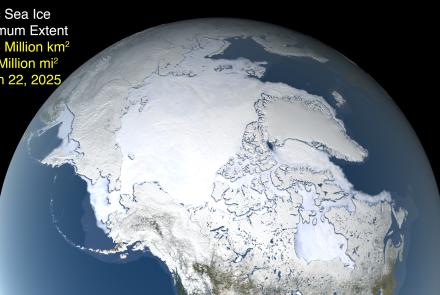Our sun’s impact on the solar system continues to present mysteries for researchers. Now, four University of Alaska Fairbanks Geophysical Institute space and plasma scientists hope to advance understanding of a key interaction between the solar wind and the planets when a four-stage NASA sounding rocket launches as early as May 7 and arcs high above the Atlantic Ocean.
The four researchers are part of a project led by Geophysical Institute space physics professor Peter Delamere. Called KiNET-X, the experiment seeks to understand how a large mass of plasma such as the solar wind interacts at the particle level with, for example, the plasma of Earth’s space environment.
It’s one of the fundamental mysteries of heliophysics.
That interaction between the solar wind and a planet’s magnetosphere appears as the aurora, whether here on Earth or on another planet that has a magnetic field and a substantial atmosphere. The aurora is generated by accelerated electrons, and the energization process is thought to occur at extremely small scales.
The KiNET-X experiment is designed to test the understanding of how auroral electrons are energized. Preparation has been underway since 2018, when NASA approved the project.
“I think that we've always recognized there's something strange in space plasmas, and that is you have this huge, huge volume of space,” said Delamere, who is the principal investigator for the experiment. “In the case of the plasma in Earth's magnetosphere, it’s many planetary diameters in scale.”
“But when you look at the aurora, you see these very thin curtains,” he said. “And why is the aurora so thin? Why do you get these very, very thin curtains that are dynamic?”
The answer might lie in how energy and momentum are transferred at the particle level when the plasmas of two magnetically connected regions of space interact.
The sun’s magnetic reach is so powerful that it permeates our solar system in what is called the Interplanetary Magnetic Field. The solar wind — mostly hydrogen and helium ions — travels outward along with the sun’s far-reaching magnetic field lines.
The Earth, like several other planets in our solar system, has its own magnetic field and its own plasma, up in the ionosphere.
The KiNET-X experiment, which builds on the work of previous NASA missions, will try to replicate the interaction of the two plasma bodies but on an exceptionally smaller scale. Plasma is a gas in which atoms have been broken into free-floating negative electrons and positive ions. It accounts for more than 99% of the visible universe.
The experiment is also expected to provide insight into what happens when the magnetic field lines of the two plasma bodies meet. Examples are Earth’s magnetopause — the boundary of the Earth’s magnetosphere where it meets the solar wind — and the relationship of Jupiter with its curious moon Io, which is a rare body in the solar system because it is magnetically linked to the planet and influences Jupiter’s aurora.
The KiNET-X project will launch a Black Brant XII rocket, the largest in the sounding rocket stable, from NASA’s Wallops Flight Facility on Wallops Island, Virginia, in search of answers.
The rocket will rise over the Atlantic Ocean into the ionosphere and release two canisters of barium thermite that will then be detonated, one at about 249 miles high and one 90 seconds later on the downward trajectory at about 186 miles, near Bermuda in the North Atlantic Ocean.
The barium, once dispersed from the canisters, will turn into a plasma when ionized by the sunlight. There is no danger associated with the barium release, Delamere said.
The action will start when the barium plasma clouds, which will generate their own electromagnetic fields and waves, interact with the existing plasma of the ionosphere. The result could be an artificial aurora for residents of Bermuda, though creating one isn’t the purpose of the experiment.
“This is a controlled experiment where we know the injected energy and momentum,” Delamere said. “Now we can quantify the flow of energy and momentum from the cloud to the ambient plasma and, hopefully, to accelerated electrons.”
The rocket will also carry an array of instruments that will be released to measure reactions of the two barium plasma clouds with the plasma of the ionosphere. Instruments will record magnetic and electric field disturbances, plasma density and electron and ion distribution.
Why launch from Virginia rather than from Poker Flat Research Range north of Fairbanks?
“We want a very quiet space environment for this. We don't want any disturbances from aurora, for example,” Delamere said. “We want to disturb that space environment with this controlled experiment. The only waves present should be from this experiment, not from natural geomagnetic activity.”
Delamere will be at Wallops Island for the launch. Project co-investigator Don Hampton, a Geophysical Institute research associate professor, will be in Bermuda for ground observations of the experiment. Geophysical Institute researchers Mark Conde, a space physics professor, and Antonius Otto, an emeritus professor of plasma physics, will be monitoring the experiment from Fairbanks.
The experiment also includes researchers and equipment from Dartmouth University, University of New Hampshire, Clemson University, University of Maryland and NASA’s Goddard Space Flight Center.
The launch window is May 7-16, 2021.
